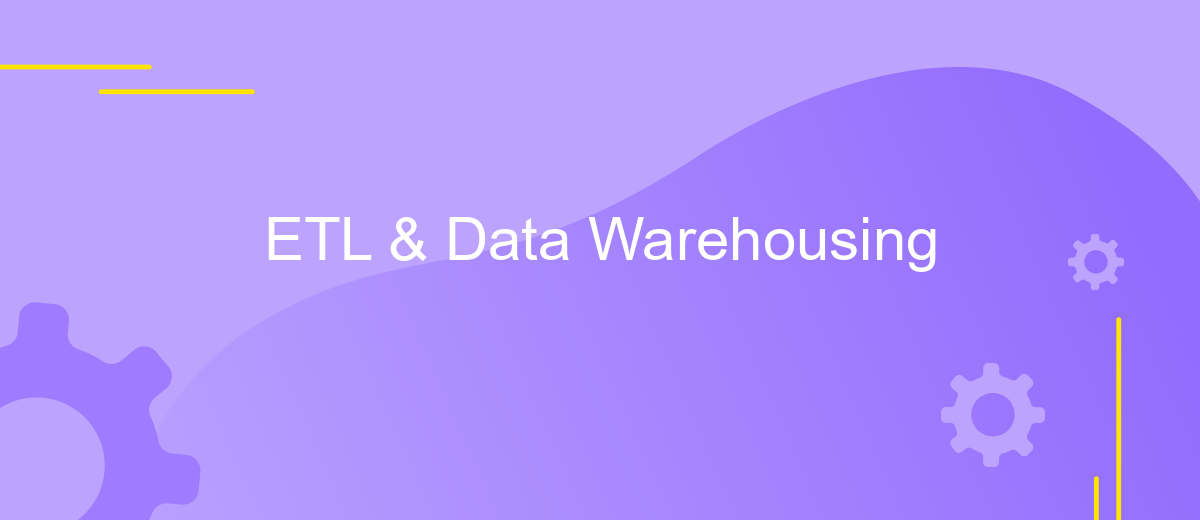ETL & Data Warehousing
Extract, Transform, Load (ETL) processes and data warehousing are critical components in the realm of data management and business intelligence. ETL tools enable organizations to efficiently gather, cleanse, and transform data from diverse sources, loading it into centralized data warehouses. This consolidation empowers businesses with actionable insights, driving informed decision-making and strategic planning. Explore the intricacies and benefits of ETL and data warehousing in this article.
ETL Overview
ETL (Extract, Transform, Load) is a crucial process in data warehousing that involves extracting data from various sources, transforming it into a suitable format, and loading it into a data warehouse for analysis and reporting. This process ensures that data is accurate, consistent, and ready for business intelligence activities.
- Extract: Data is collected from multiple sources such as databases, APIs, and flat files.
- Transform: The extracted data is cleaned, formatted, and transformed to meet the requirements of the target data warehouse.
- Load: The transformed data is loaded into the data warehouse for further analysis and reporting.
Modern ETL tools and services, such as ApiX-Drive, simplify the integration process by providing a user-friendly interface and pre-built connectors to various data sources. These tools automate much of the ETL workflow, reducing the time and effort required to set up and maintain data pipelines, thereby enhancing efficiency and accuracy in data management.
Data Warehousing Overview

Data warehousing is a critical component in the realm of data management and analytics. It involves the collection, storage, and management of large volumes of data from various sources into a centralized repository. This repository, known as a data warehouse, is designed to enable efficient querying, reporting, and analysis, providing businesses with valuable insights and supporting decision-making processes. Data warehouses are optimized for read-heavy operations and complex queries, making them essential for business intelligence (BI) initiatives.
One of the key aspects of data warehousing is the integration of data from disparate sources. This often involves extracting data from various databases, transforming it into a consistent format, and loading it into the warehouse—a process known as ETL (Extract, Transform, Load). Services like ApiX-Drive can simplify this integration process by providing automated data transfer and synchronization between different systems, ensuring that the data warehouse is continuously updated with the latest information. This seamless integration is crucial for maintaining data accuracy and relevance, ultimately enhancing the overall effectiveness of the data warehouse.
ETL and Data Warehousing Integration

Integrating ETL processes with data warehousing systems is crucial for effective data management and analytics. ETL, which stands for Extract, Transform, Load, involves extracting data from various sources, transforming it into a suitable format, and loading it into a data warehouse. This integration ensures that data is clean, consistent, and ready for analysis.
- Extract: Gather data from multiple sources, such as databases, APIs, and flat files.
- Transform: Cleanse and convert the data into a uniform format, applying business rules and validation.
- Load: Import the transformed data into the data warehouse for storage and analysis.
Tools like ApiX-Drive can facilitate the ETL process by automating data extraction and transformation, ensuring seamless integration with data warehousing systems. By leveraging such services, organizations can streamline their data workflows, reduce manual effort, and ensure timely access to accurate data for decision-making. This integration is vital for maintaining data integrity and supporting business intelligence initiatives.
Benefits of ETL and Data Warehousing

ETL (Extract, Transform, Load) and Data Warehousing are crucial components in modern data management strategies. They enable organizations to efficiently collect, transform, and store vast amounts of data from various sources, making it accessible and useful for decision-making processes.
One of the primary benefits of ETL and Data Warehousing is the ability to integrate data from multiple sources into a single, unified repository. This integration helps in maintaining data consistency, improving data quality, and providing a single version of the truth.
- Improved data quality and consistency
- Enhanced decision-making capabilities
- Streamlined data integration from various sources
- Scalability to handle large volumes of data
- Time and cost efficiency in data processing
Services like ApiX-Drive can further simplify the process of setting up and managing ETL workflows by offering seamless integration solutions. ApiX-Drive helps businesses automate data transfers, reducing manual efforts and minimizing the risk of errors, thus ensuring that data warehousing processes are more efficient and reliable.
Challenges of ETL and Data Warehousing
One of the primary challenges of ETL (Extract, Transform, Load) and Data Warehousing is handling the complexity of data integration from multiple sources. Data often comes in various formats and structures, requiring sophisticated transformation processes to unify and cleanse it. This can be time-consuming and prone to errors, especially when dealing with large volumes of data. Additionally, maintaining data quality and consistency across different systems is a continuous effort that demands rigorous validation and monitoring.
Another significant challenge is ensuring the scalability and performance of the ETL processes and the data warehouse itself. As data volumes grow, the system must efficiently manage and process increasing amounts of information without degrading performance. Tools like ApiX-Drive can help streamline these integrations by providing automated workflows and real-time data synchronization, reducing the manual effort and potential for errors. However, selecting the right tools and technologies that align with organizational needs and future growth is crucial for long-term success.
FAQ
What is ETL in the context of data warehousing?
Why is data warehousing important for businesses?
What are the main components of a data warehouse?
How can businesses automate ETL processes?
What are some best practices for maintaining a data warehouse?
Apix-Drive will help optimize business processes, save you from a lot of routine tasks and unnecessary costs for automation, attracting additional specialists. Try setting up a free test connection with ApiX-Drive and see for yourself. Now you have to think about where to invest the freed time and money!

